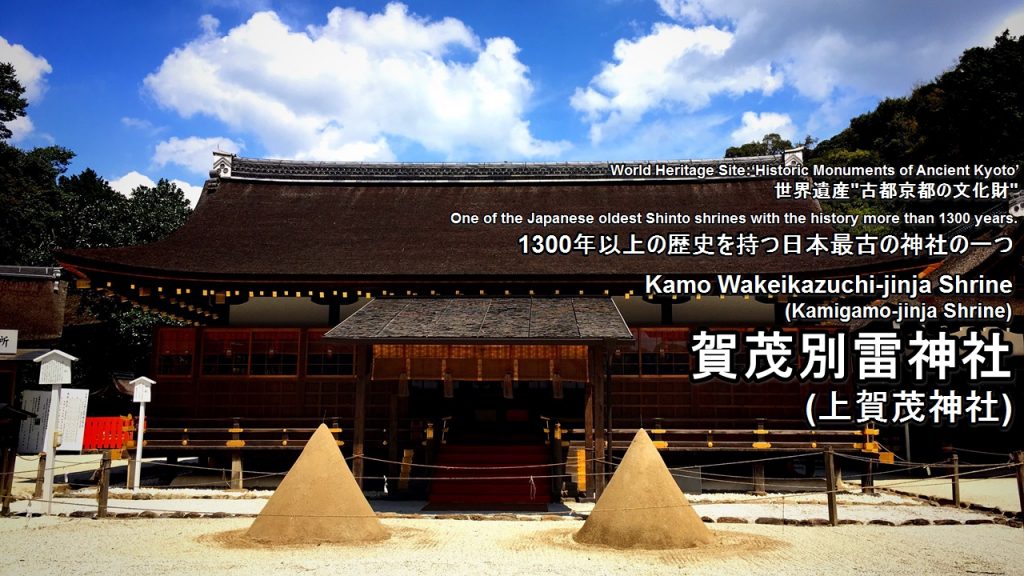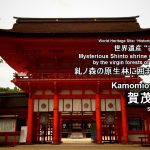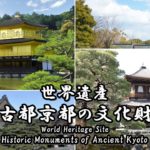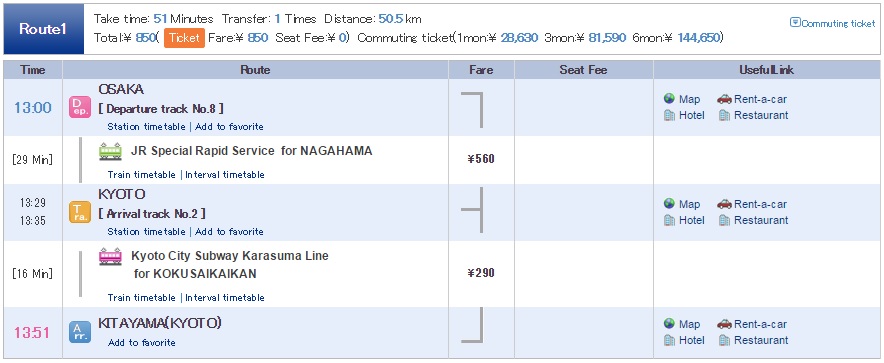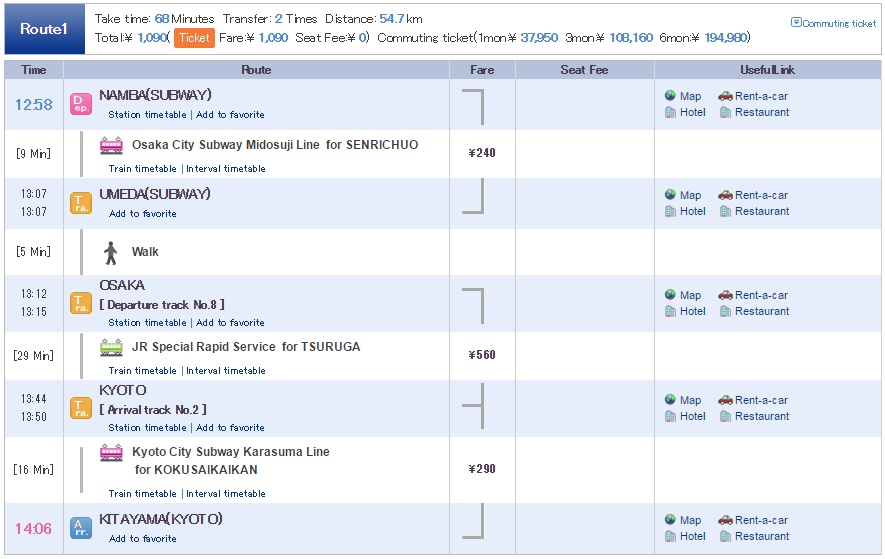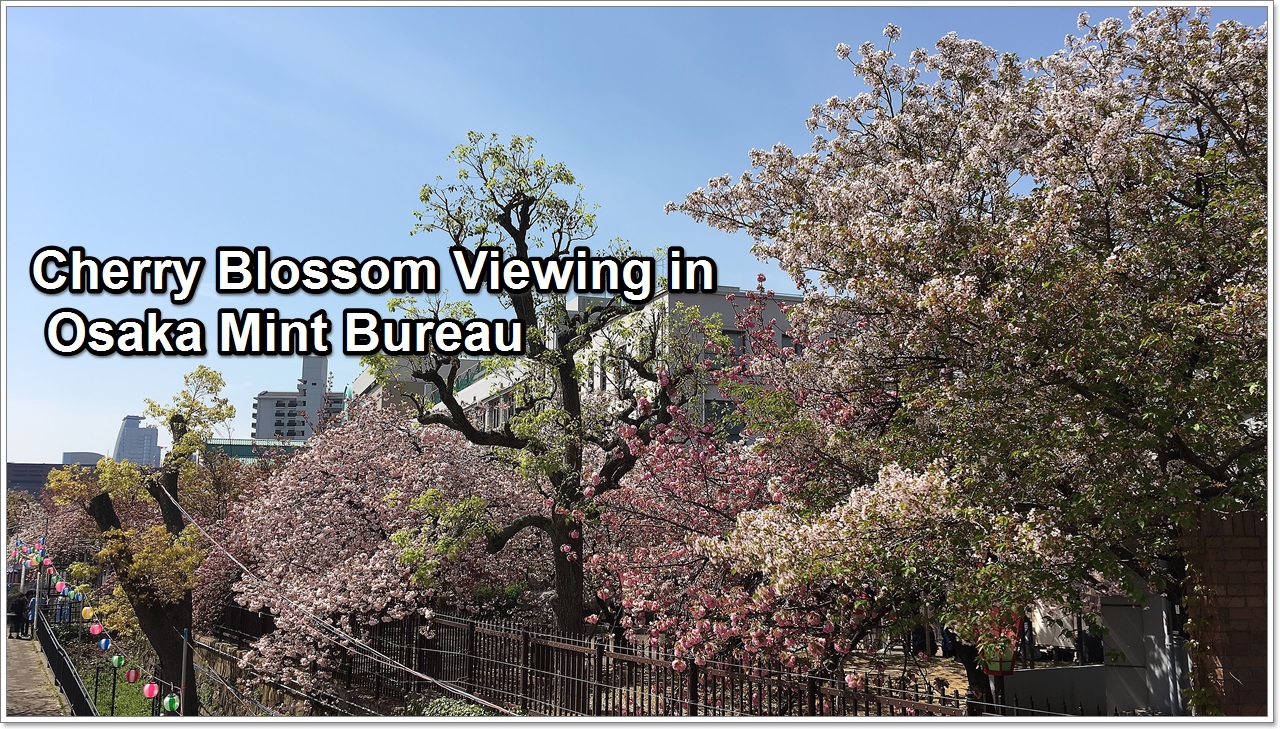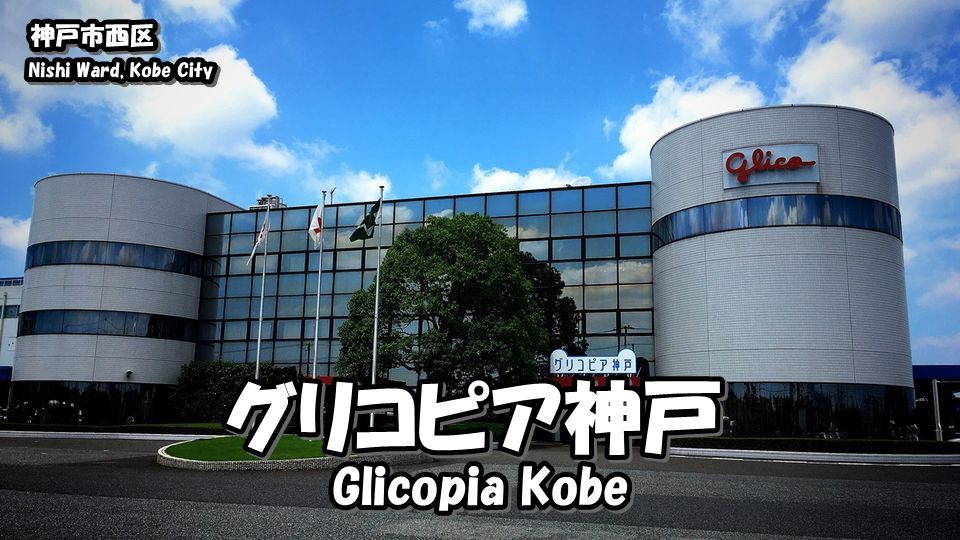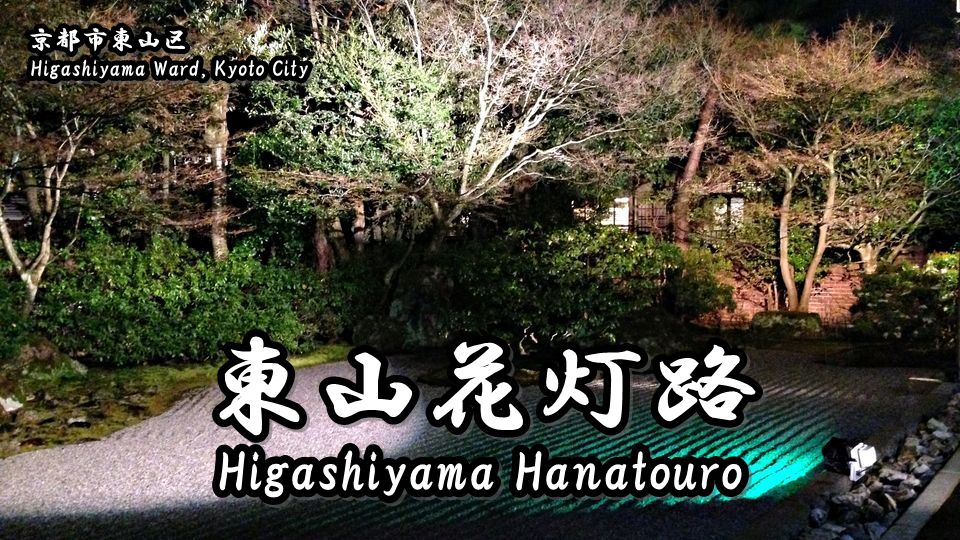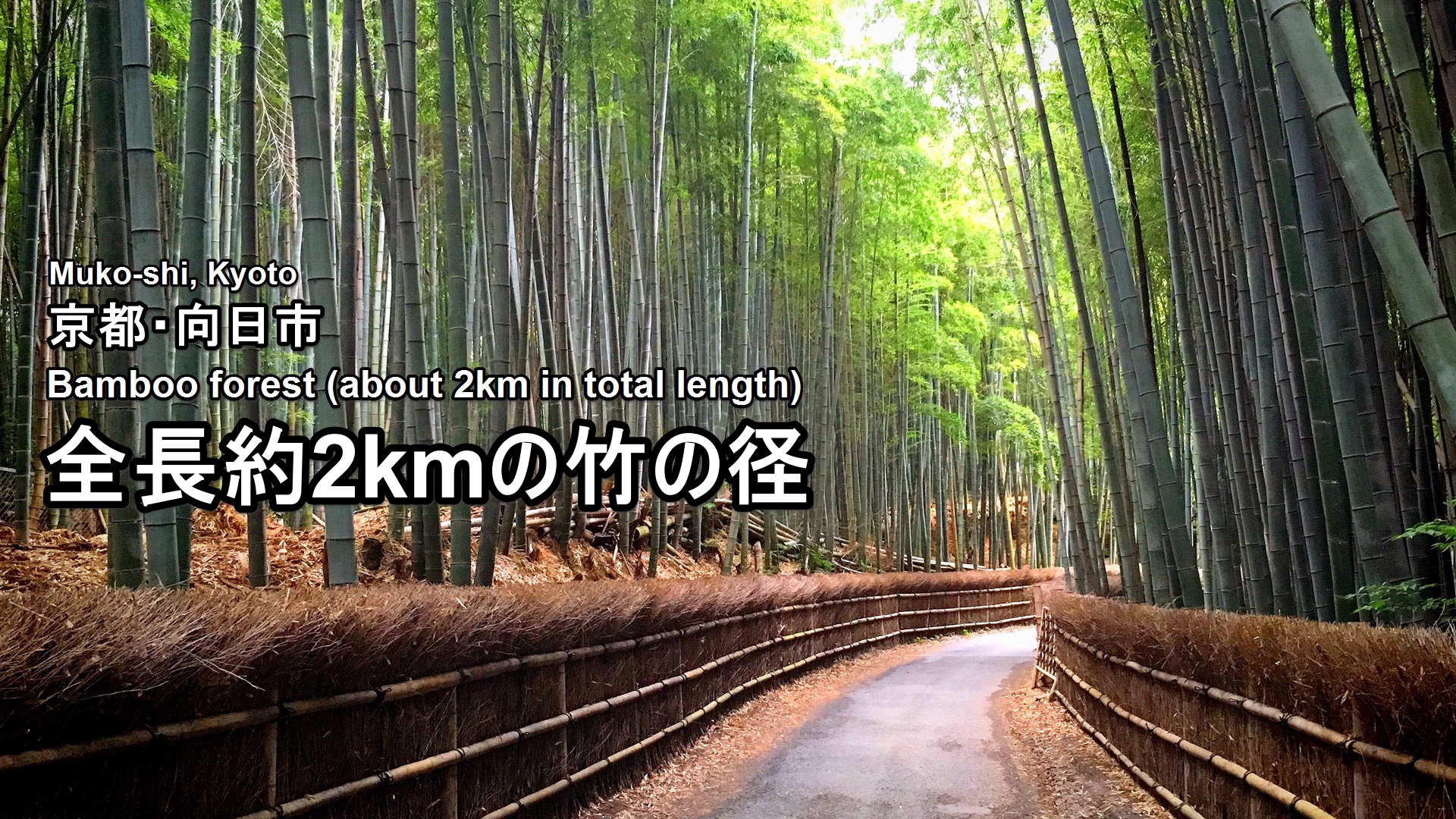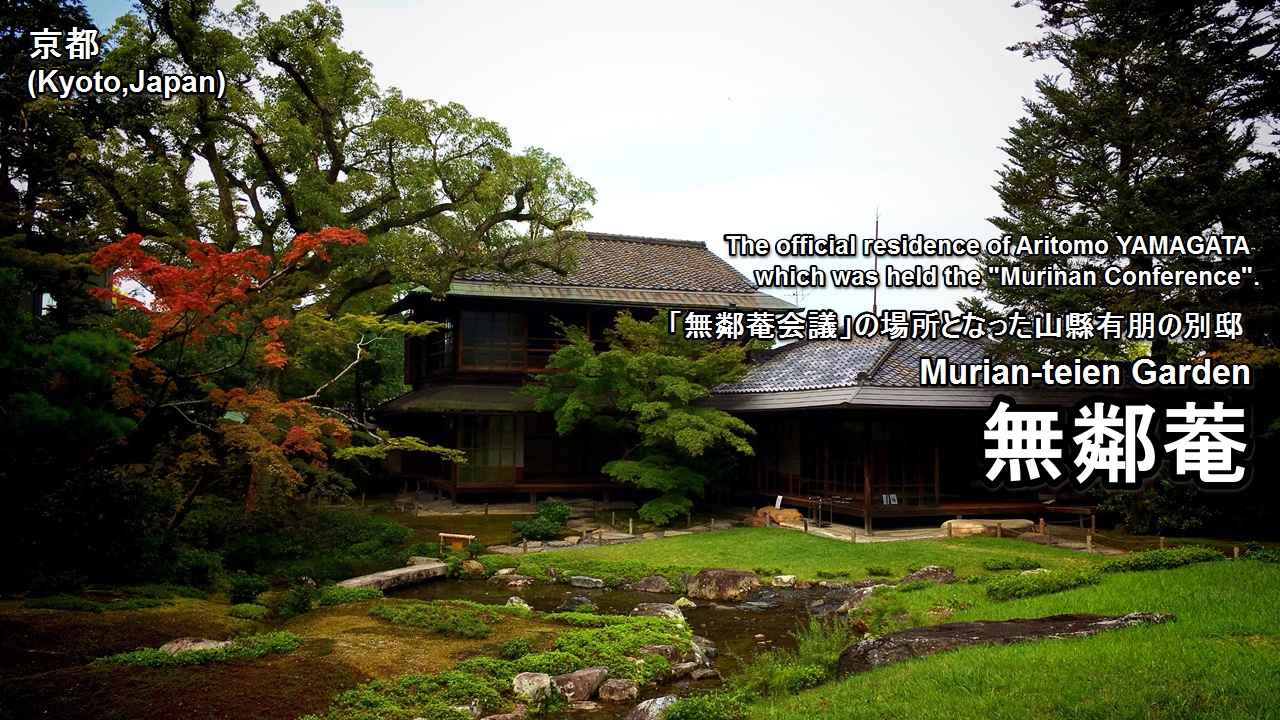Kamigamo-jinja Shrine is one of the Japanese oldest Shinto shrines along with Shimogamo-jinja Shrine.
Along with Shimogamo-jinja Shrine, it enshrines ancient ujigami of the Kamo clan, and the pair generally being referred to as Kamo-jinja Shrine (Kamo-sha) and treated as paired shrines.
God who is enshrined in Kamigamo Shrine is called “賀茂別雷神(Kamo-wakeikazuchi-no-kami)”.
Thus, the official name of this Shinto shrine is called “賀茂別雷神社(Kamo Wakeikazuchi-jinja shrine)”.
The history of this Shinto shrine founded for 678 years is very old and is one of the oldest Shinto shrines of Japan to have the history more than 1,300 years.
And this shrine has been designated as the Michelin green guide ★ and the World Heritage List as part of the cultural assets of ancient capital of Kyoto.
↓About Shimogamo-jinja Shrine↓
Contents:
- About World Heritage ‘Historic Monuments of Ancient Kyoto’
- What is the difference between Kamigamo-jinja Shrine and Shimogamo-jinja Shrine?
- About Kamigamo-jinja Shrine
- The highlights of Kamigamo-jinja Shrine
- A lot of subordinate shrines
- Goshuin(shrine seal or stamp) of Kamigamo-jinja Shrine
- How to get to Kamigamo-jinja Shrine
1.About World Heritage ‘Historic Monuments of Ancient Kyoto’
17 places of temples and shrines of Kyoto are designated in ‘Historic Monuments of Ancient Kyoto’.
↓Details of the “Historic Monuments of Ancient Kyoto” is here.↓
Kamigamo-jinja Shrine has been designated as the World Heritage List as part of the cultural assets of ancient capital of Kyoto.
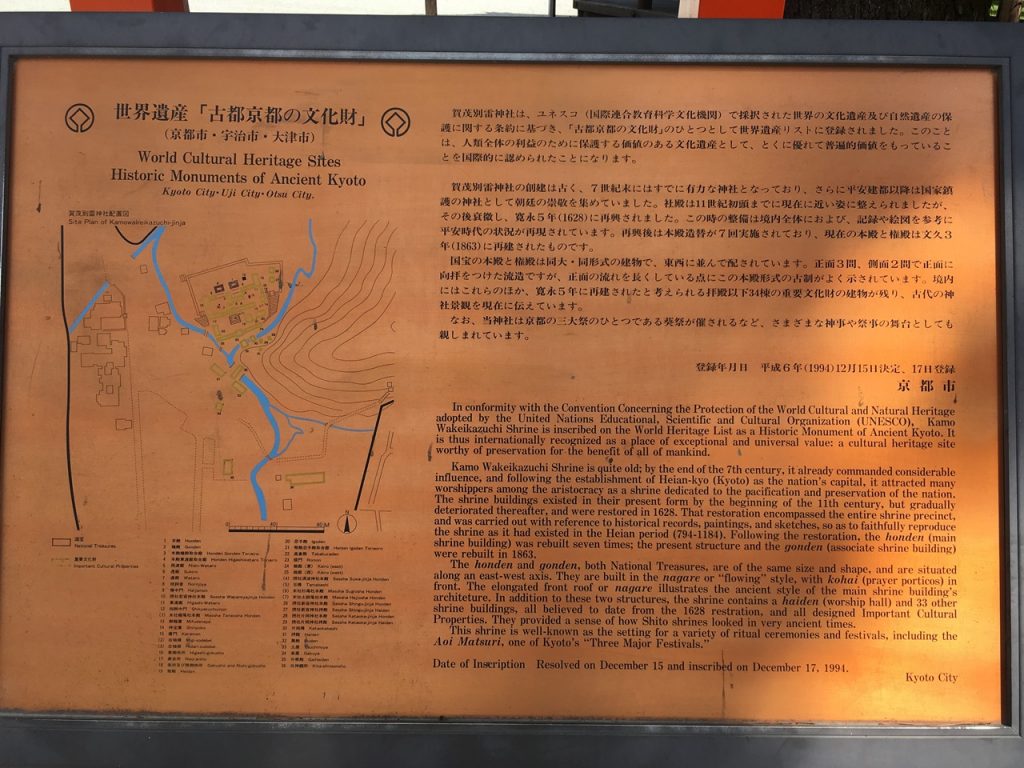
2.What is the difference between Kamigamo-jinja Shrine and Shimogamo-jinja Shrine?
Kyoto has two shrines which are called “Kamigamo-jinja Shrine” and “Shimogamo-jinja Shrine”.
(Both Shinto shrines are world heritages.)
Originally these two Shinto shrines were one Shinto shrine which was called “Kamo-jinja Shrine (Kamo-sha)”.
However, it was divided into the north and south Shinto shrines in about 700 years in the Christian era because the scale of the Shinto shrine became too much big.
Afterwards, the Shinto shrine of the north side started to be called “Kamigamo-jinja Shrine”, the Shinto shrine of the south side started to be called “Shimogamo-jinja Shrine”.
Currently, Kamigamo-jinja Shrine enshrines God called “賀茂別雷神(Kamo-wakeikazuchi-no-kami)”.
And “賀茂建角身命(Kamo-taketunumi-no-mikoto)” who are a grandfather of “賀茂別雷神(Kamo-wakeikazuchi-no-kami)” and “玉依媛命(Tamayorihime-no-mikoto)” who are a mother of “賀茂別雷神(Kamo-wakeikazuchi-no-kami)” is enshrined in Shimogamo-jinja Shrine.
There is no order in these two Shinto shrines.
In addition, when we watch the name of these Shinto shrine well…
上賀茂神社(Kamigamo-jinja Shrine)
下鴨神社(Shimogamo-jinja Shrine)
We notice that a different kanji(gamo=鴨=賀茂) is used for the name of these Shinto shrine. (○´艸`)
Originally it is said that both Shinto shrines used kanji of “鴨“.
However, a kanji written as “賀茂” that was lucky words was added to the name of the Shinto shrine of the north side in about 726 in the Christian era.
By the way, the river flowing through the center of Kyoto is called Kamogawa River.
The name of this river also includes two notation of kanji such as “賀茂川(Kamogawa River)” and “鴨川(Kamogawa River)”.
The Kamogawa River up to Kamigamo-jinja Shrine is called “賀茂川(Kamogawa River)”, and from Shimogamo-jinja Shrine is called “鴨川(Kamogawa River)”.
3.About Kamigamo-jinja Shrine
Kamigamo Shrine (上賀茂神社 Kamigamo Jinja) is an important Shinto sanctuary on the banks of the Kamo River in north Kyoto, first founded in 678.[1] Its formal name is the Kamo-wakeikazuchi Shrine (賀茂別雷神社 Kamo-wakeikazuchi jinja).[2]
It is one of the oldest Shinto shrines in Japan and is one of the seventeen Historic Monuments of Ancient Kyoto which have been designated by UNESCO as a World Heritage Site. The term Kamo-jinja in Japanese is a general reference to Shimogamo Shrine and Kamigamo Shrine, the traditionally linked Kamo shrines of Kyoto.[3] The Kamo-jinja serve the function of protecting Kyoto from malign influences.[4]
The jinja name identifies the Kamo family of kami or deities who are venerated. The name also refers to the ambit of shrine’s nearby woods, which are vestiges of the primeval forest of Tadasu no Mori. In addition, the shrine name references the area’s early inhabitants, the Kamo clan, many of whom continue to live near the shrine their ancestors traditionally served.[5]
Kamogamo Shrine is dedicated to the veneration of Kamo Wake-ikazuchi, the kami of thunder.
引用(citation):https://en.wikipedia.org/wiki/Kamigamo_Shrine
Open:5:00~17:00(Worship of the main shrine:10:00~16:00)
Admission fee of worship of the main shrine:500 yen
Adress:339, Kamigamo Motoyama, Kita-ku Kyoto-shi, Kyoto, 603-8047, Japan
Phone Number:+81-75-781-0011
The official name of this Shinto shrine is “賀茂別雷神社(Kamo Wakeikazuchi-jinja shrine)”, and the popular name is “上賀茂神社(Kamigamo-jinja Shrine)”.

There is much subordinate shrine in this Shinto shrine other than a main shrine and a provisional shrine.
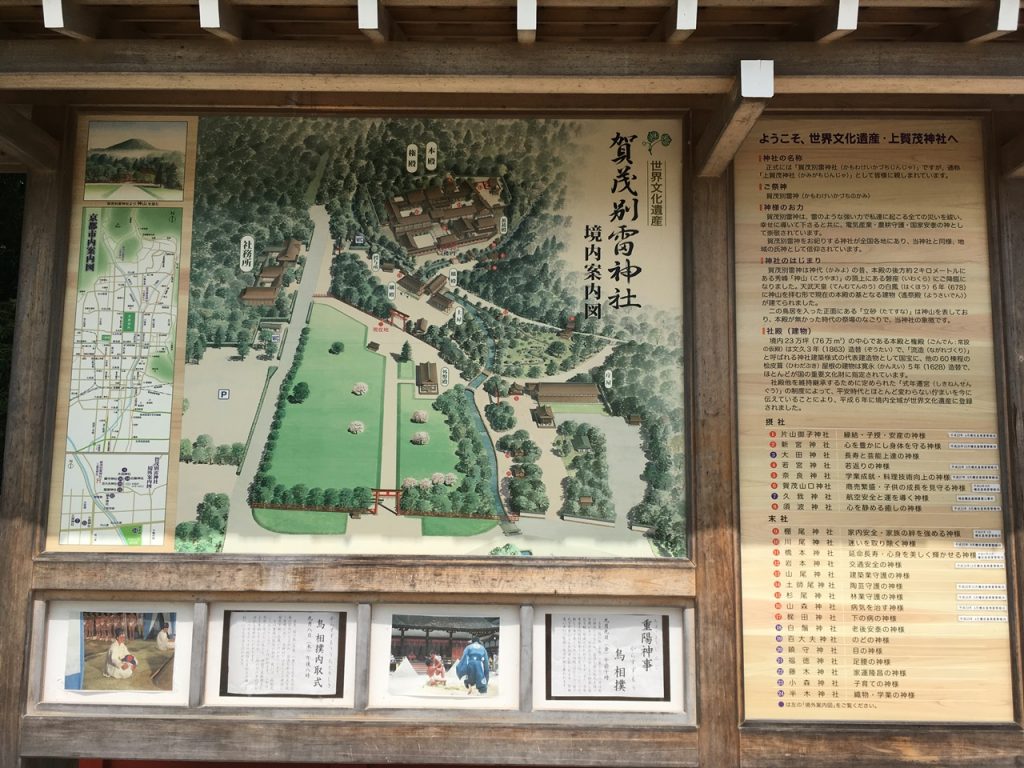
4.The highlights of Kamigamo-jinja Shrine
This is the “一ノ鳥居(Ichi-no-torii)” which is the entrance of the approach to a shrine of Kamigamo Shrine.

The approach to a shrine of the white sand spreads out.
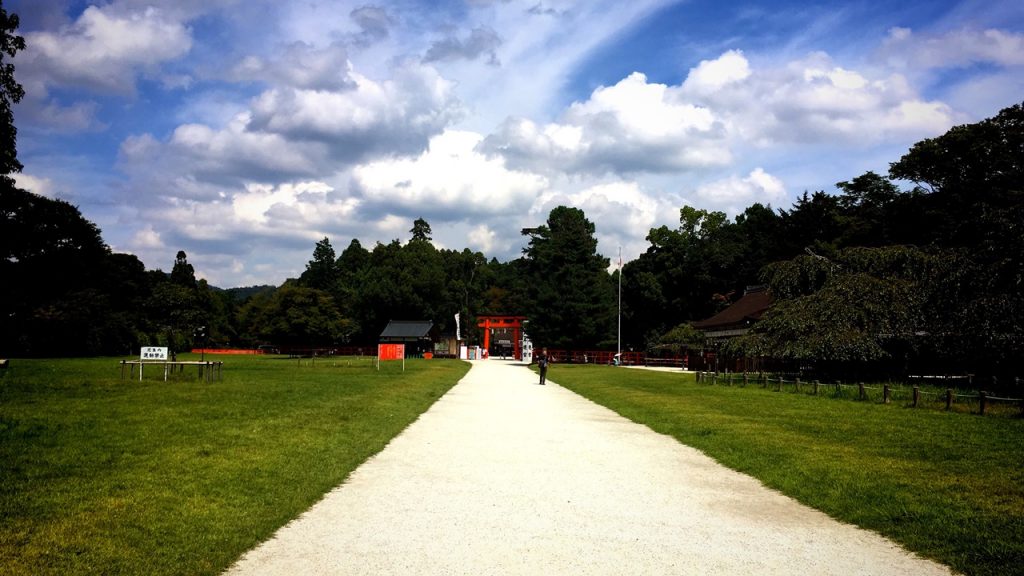
There are the “斎王桜(Saio-Zakura)” and the “御所桜(Gosho-Zakura)” which are the cherry trees more than 150 years old at the right side of this approach.
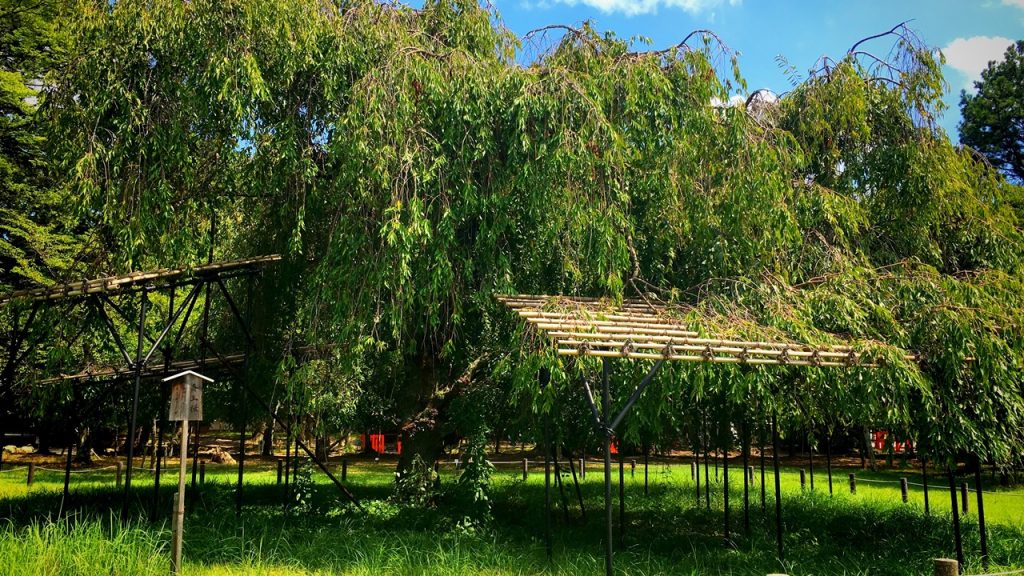
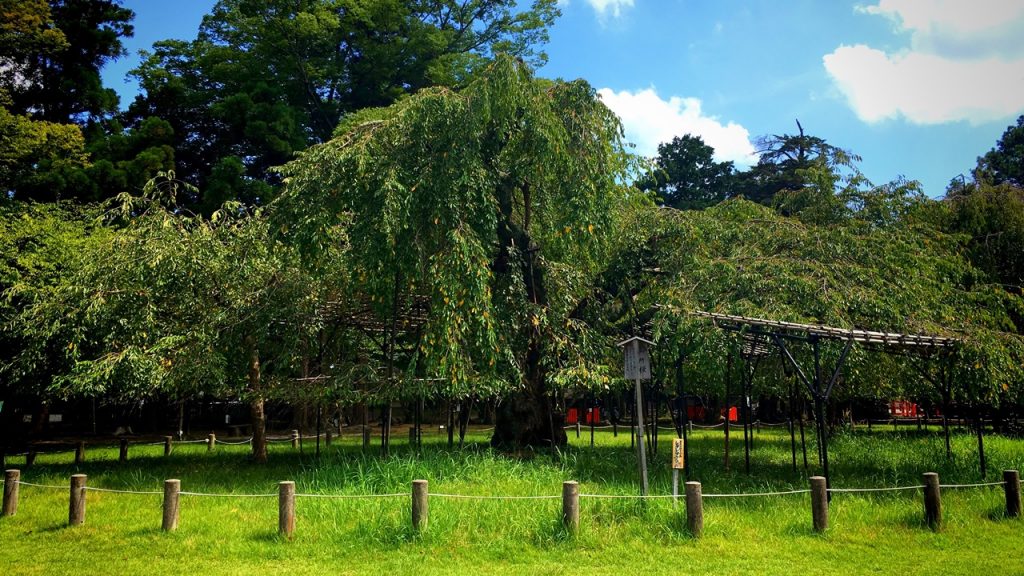
This is 外幣殿(Geheiden). This building is an important cultural property built in 1628.
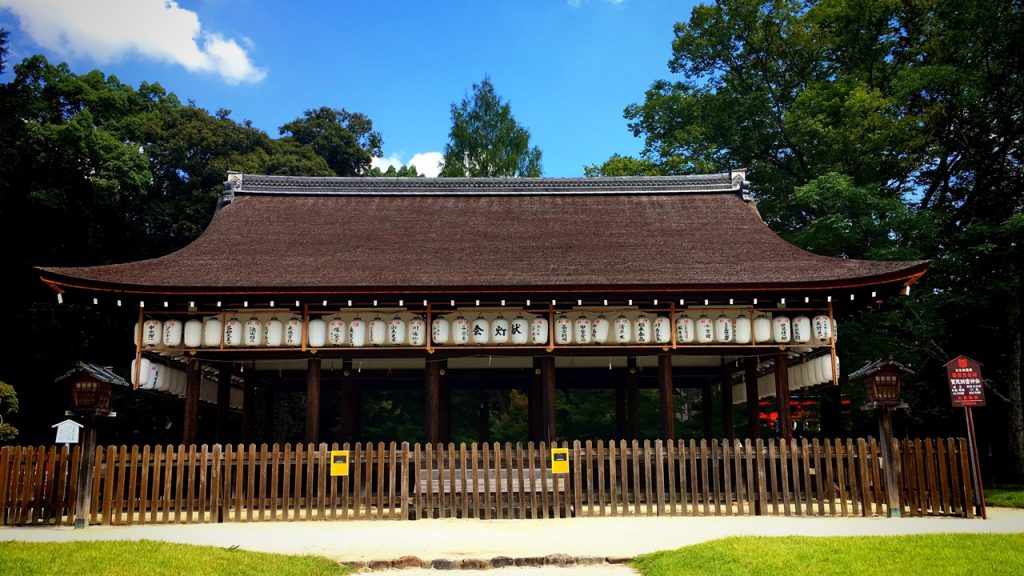
This is 神馬舎(Shinmesha(Stable of the horse dedicated to the shrine)) just before “二ノ鳥居(Ni-no-torii)”.
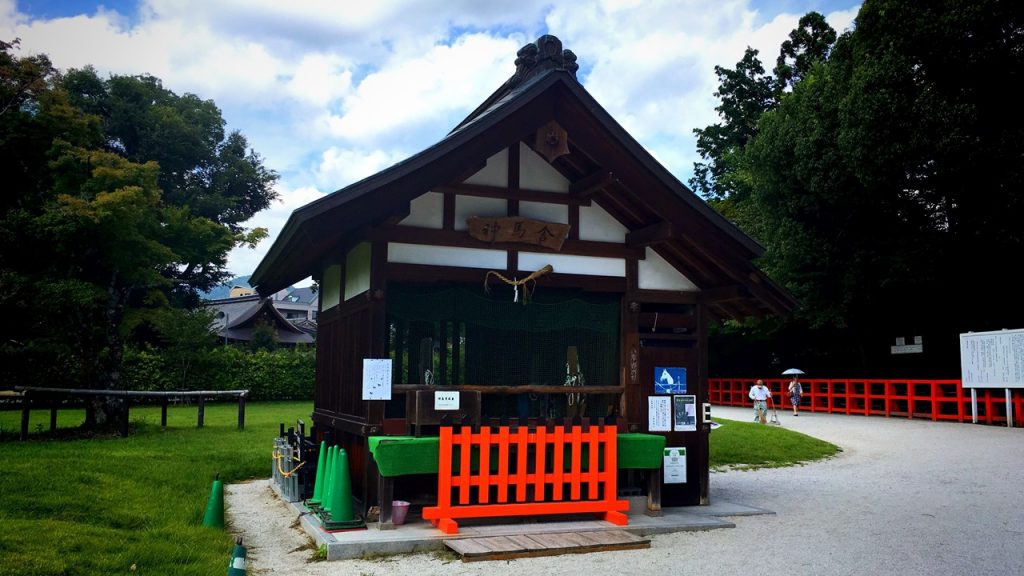
This is “二ノ鳥居(Ni-no-torii)” which is the entrance of the precincts.
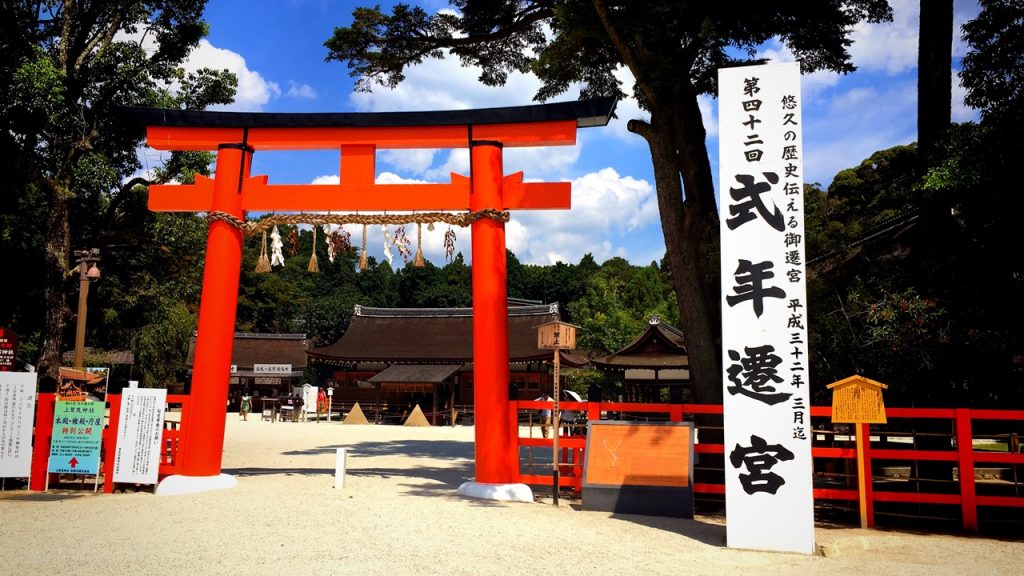
A building in the center is 拝殿(Haiden).
This building is an important cultural property built in 1628.

A conic-shaped sand called “立砂(Tatezuna)” is displayed in front of the front shrine.
“立砂(Tatezuna)” is the place where God descend to earth.
(This has been made in the image of the mountain that God has descended first.)

This is 楽舎(Gaku-no-ya).
This building is an important cultural property built in 1628.
(This is the building which the priest who serves this Shinto shrine used in old days.)
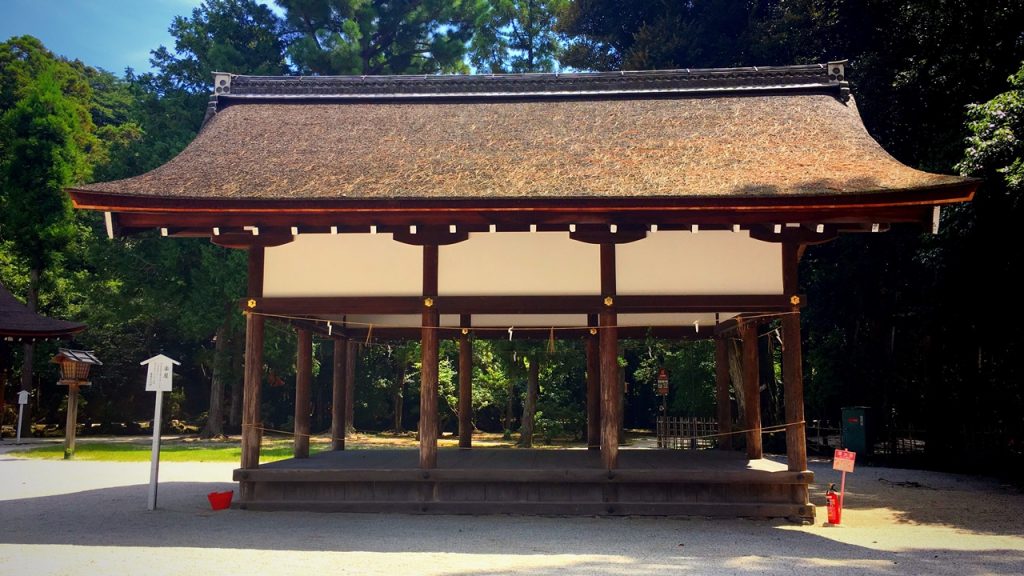
This is 土舎(Tsuchi-no-ya).
This building is an important cultural property built in 1628.
This is the building which is used when a Shinto priest expels one’s impurity. This building is still being used today.
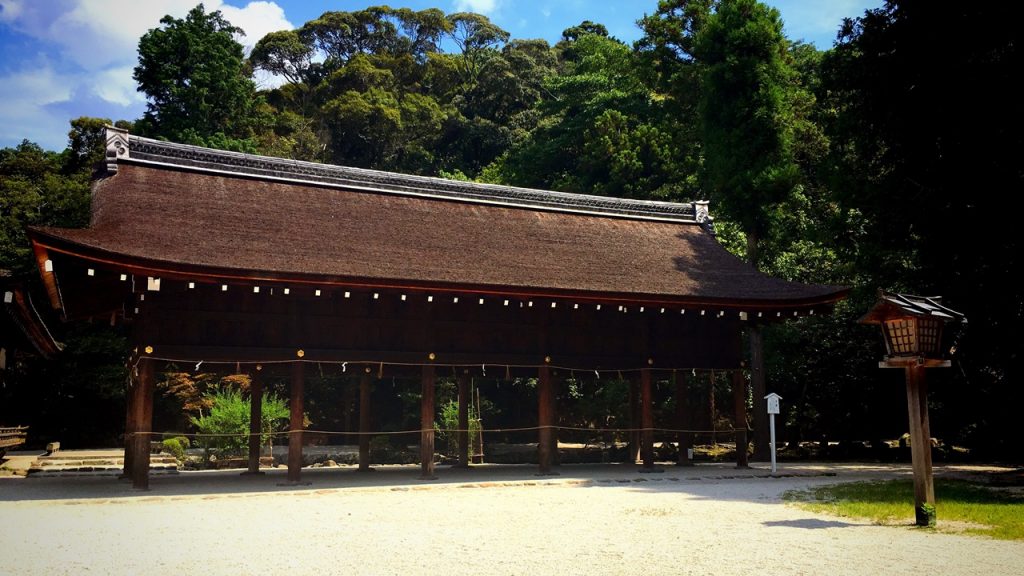
This is 舞殿(Maidono).
This building is an important cultural property built in 1863.
Because this building is built on “御手洗川(Mitaraigawa River)”, it is also called “橋殿(Hashidono)”.
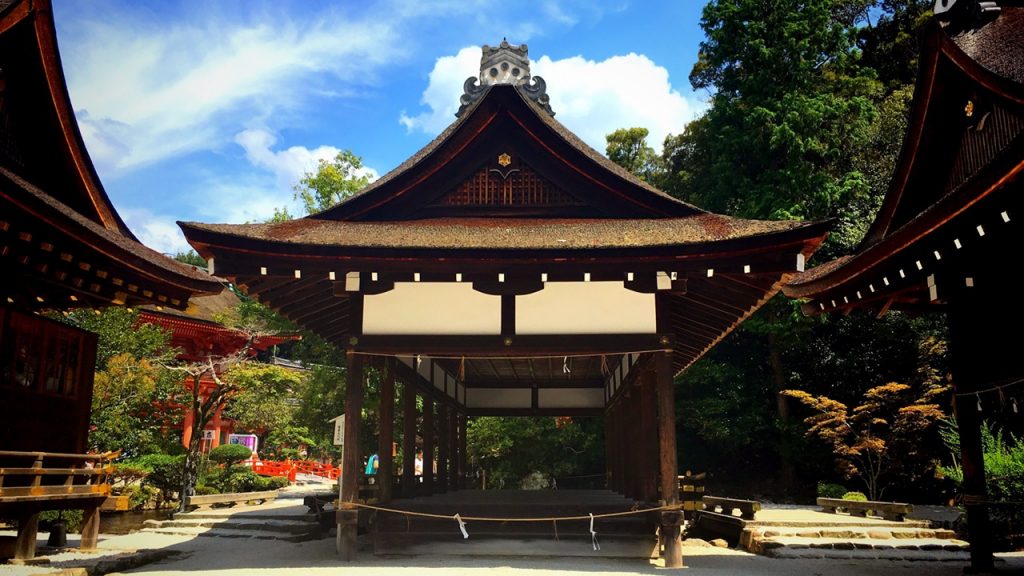
Most of buildings of this Shinto shrine are made with unique technique called “三間社流造(Sangensha-Nagarezukuri)“.
The building made by this technique has one roof is longer than another roof.
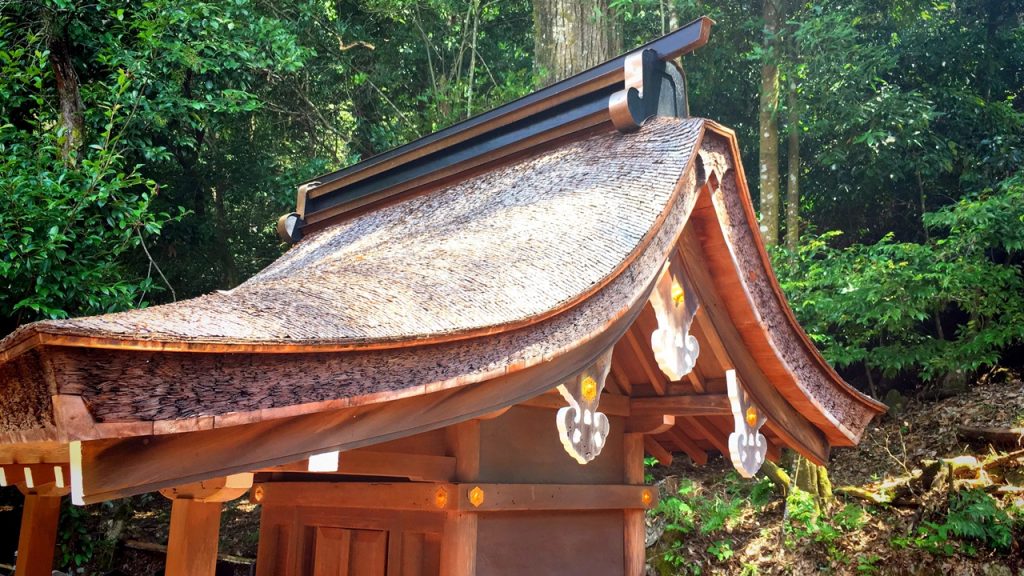
In addition, the roof of the buildings are made with Japan’s original traditional technique which is called “檜皮葺(Hiwada-Buki)“.
There are spread the peel of many Japanese cypress under the roof of the buildings.
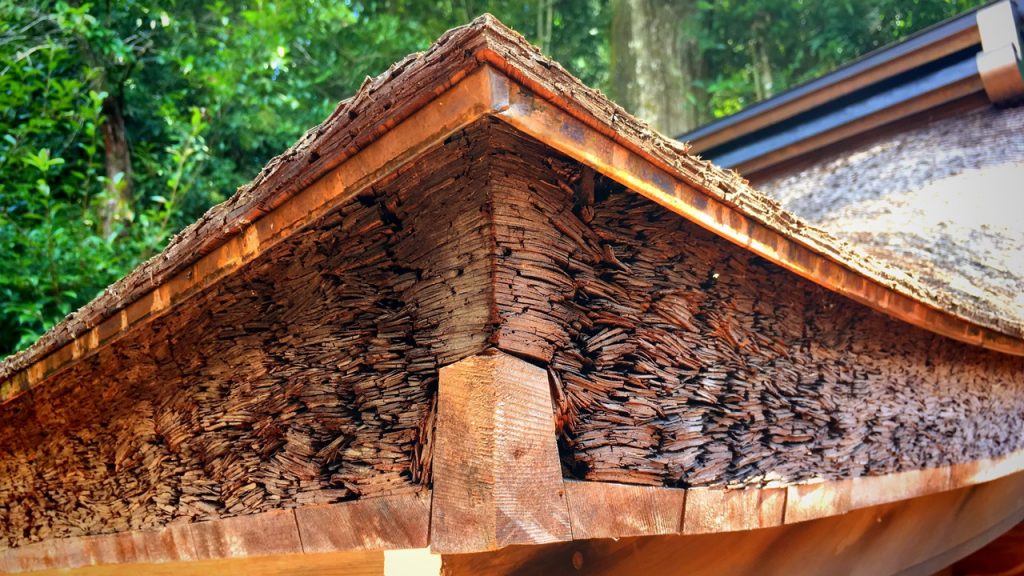
The 楼門(Roumon) to look at from the 樟橋(Kusunoki-bashi bridge).
It is said that this bridge is made with a fossil of camphor tree.
Because it is said that we becomes the longevity when we cross this bridge, is called by another name called “長寿橋(Chojubashi)”.
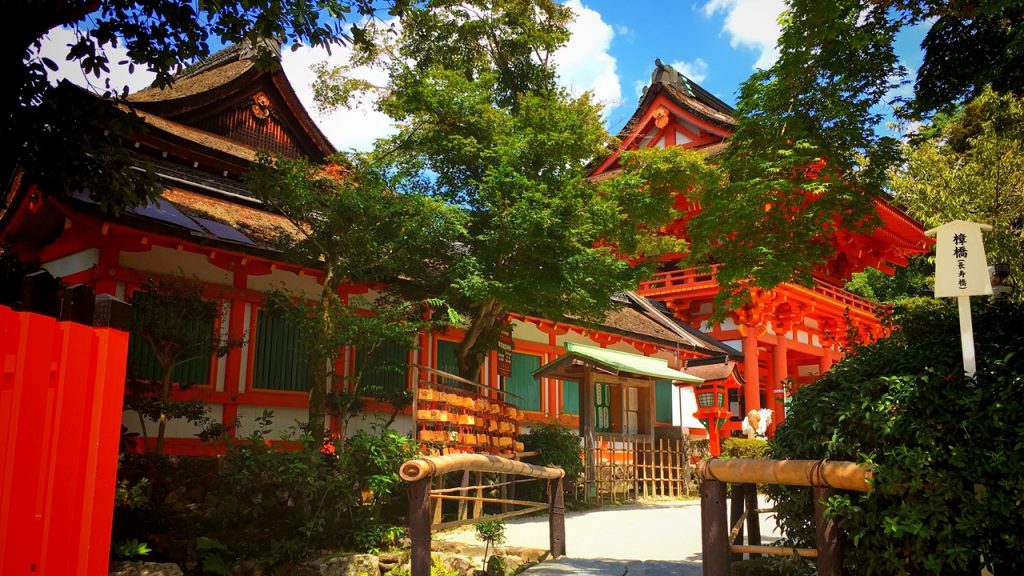
This is the 楼門(Roumon:Tower gate).
This building is an important cultural property built in 1628.
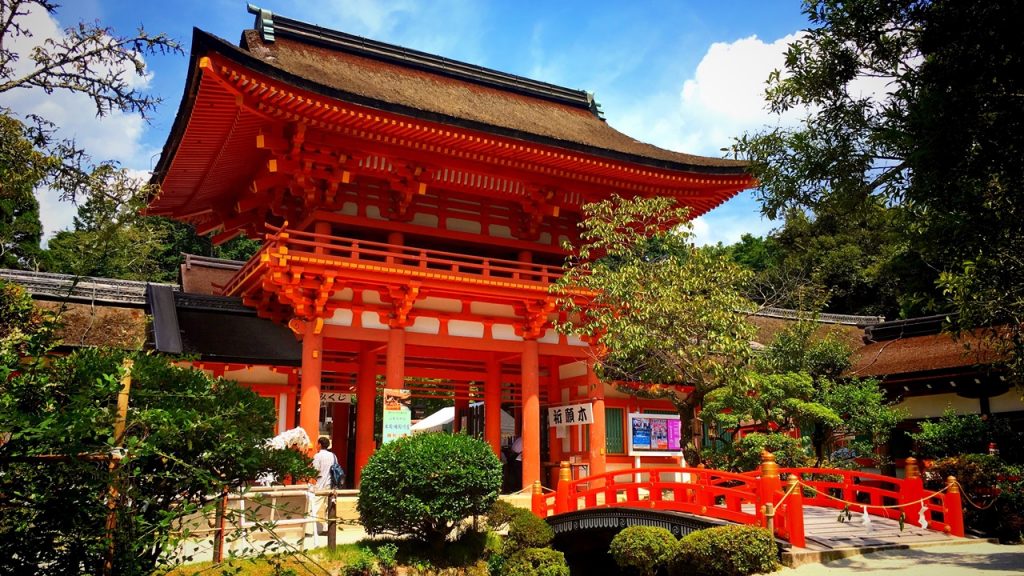
This is bamboo work art in imitation of the form of the white horse.
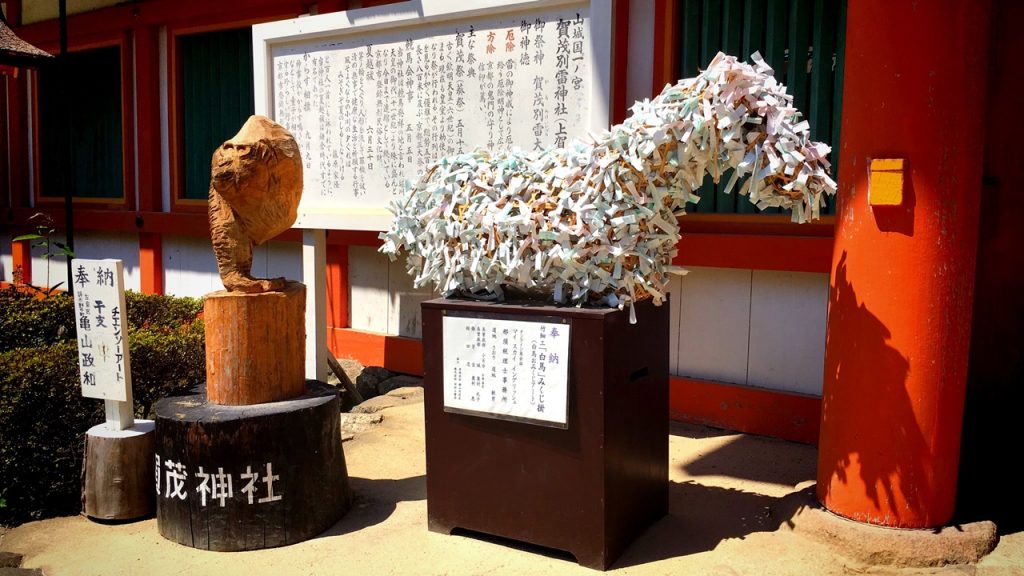
There are 中門(Chumon) and 高倉殿(Takakuraden) when we pass through the tower gate.
There are 本殿(Honden) and 権殿(Gonden) inside of this building.
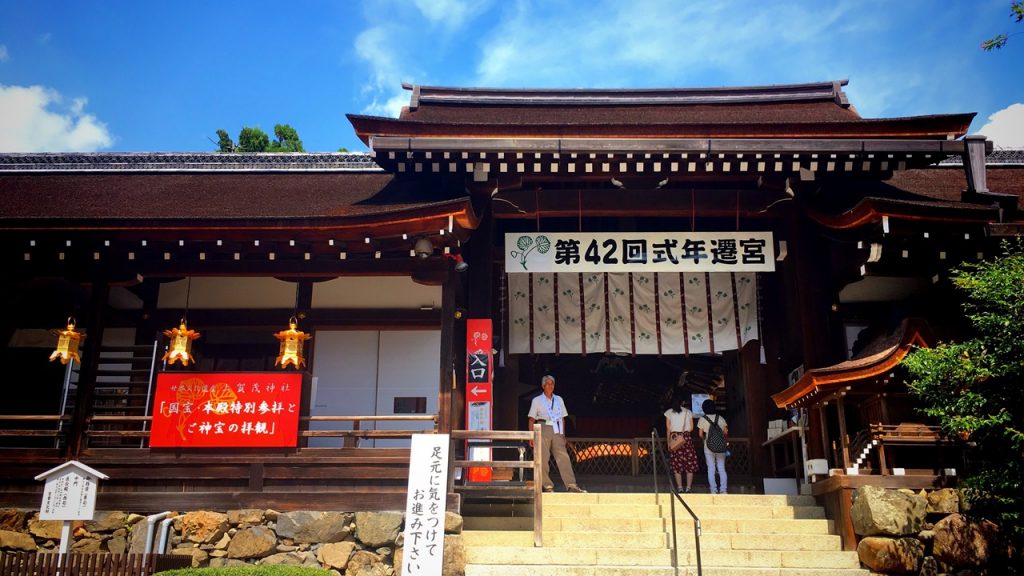
本殿(Honden) and 権殿(Gonden) is the pay area.(Admission fee is usually 500 yen. When I visited this Shinto shrine, the admission fee was 600 yen for a special period.)
After having received the great purification by the chief priest, we can enter 本殿(Honden) and 権殿(Gonden).
The photography is prohibited in 本殿(Honden) and 権殿(Gonden).
本殿(Honden) and 権殿(Gonden) have been designated a national treasure. Please go to look by all means.
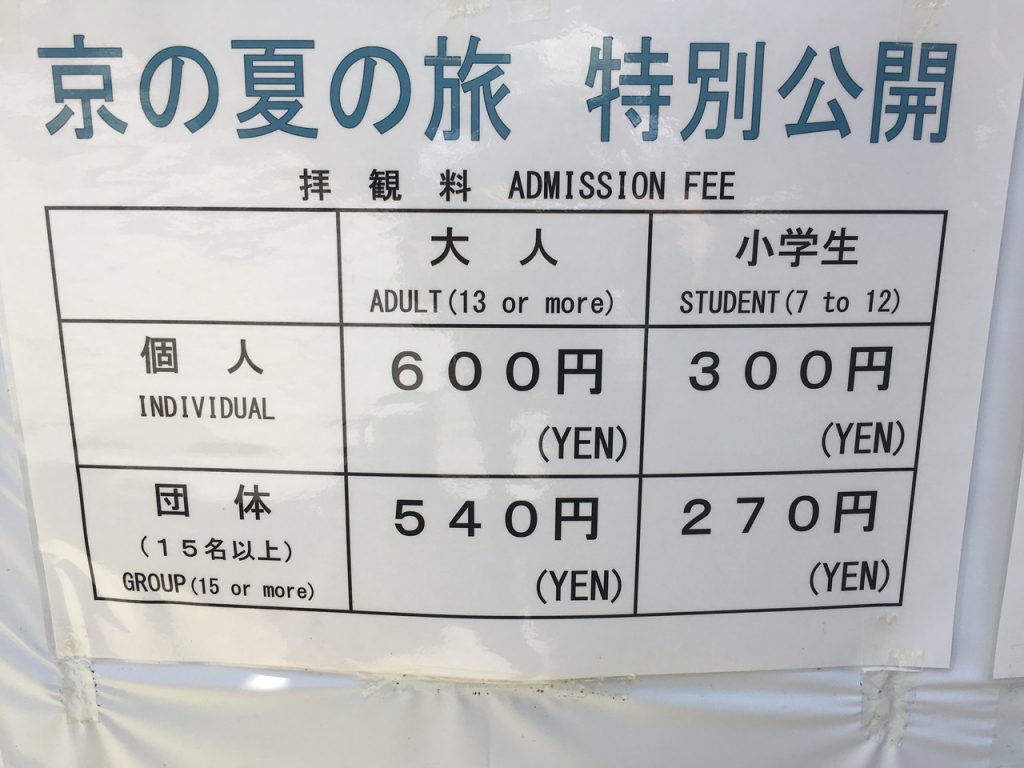
This is 庁屋(Chonoya) built on the east side of the precincts.
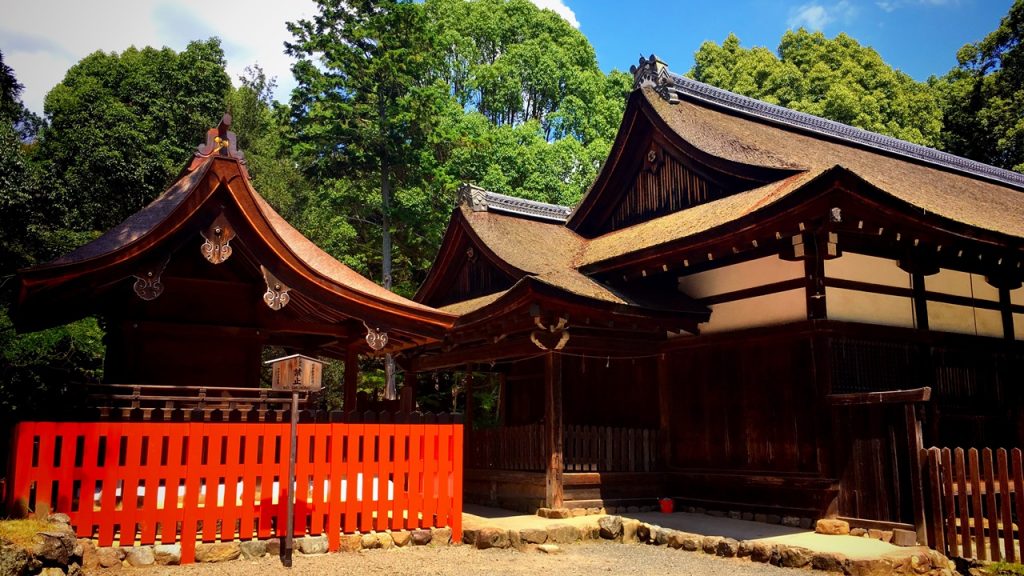
The treasure of this Shinto shrine is possessed in this building.
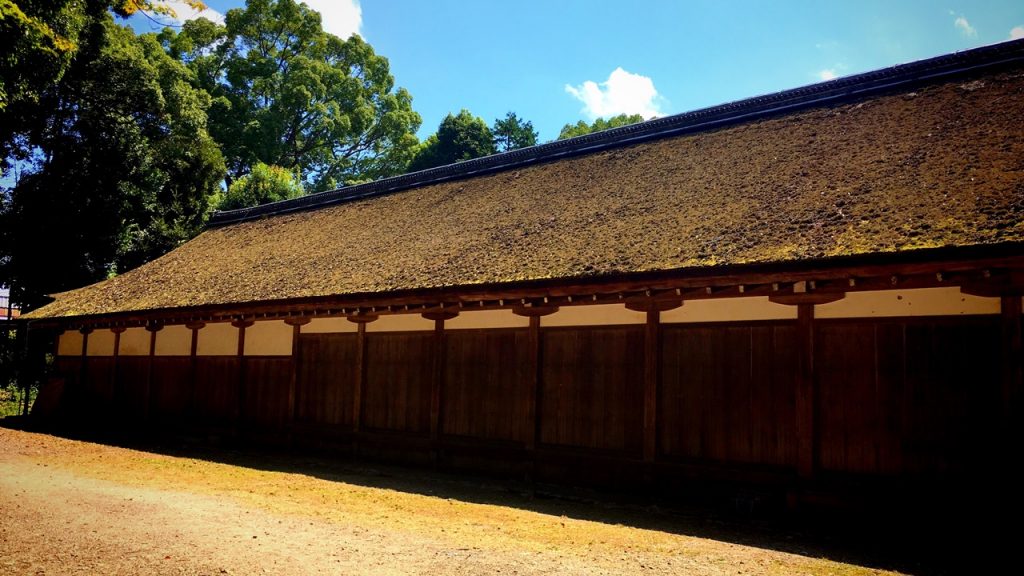
This is “客殿(Kyakuden (guest hall))” and “参籠殿(Sanroden)”.
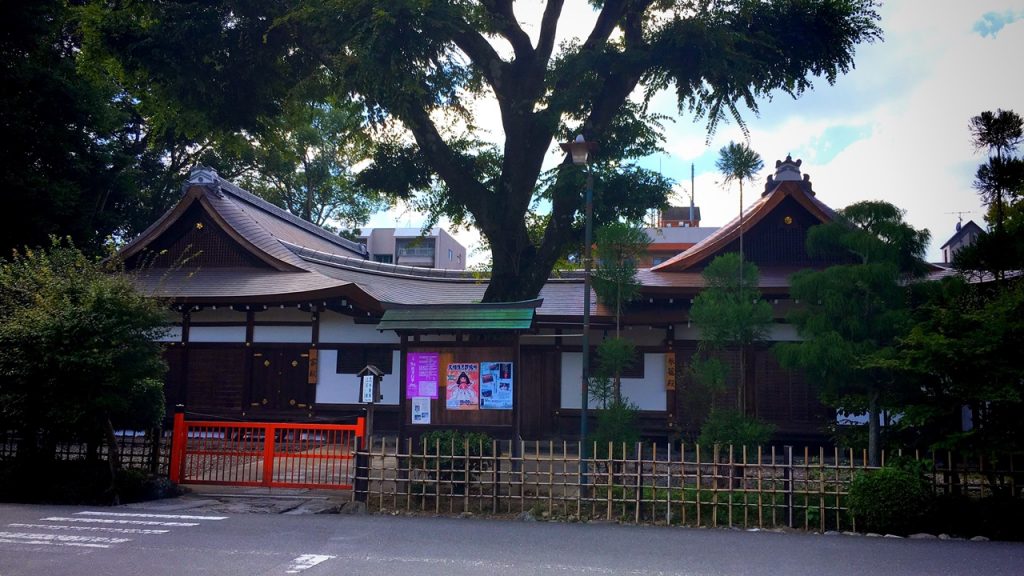
The left building is “客殿(Kyakuden (guest hall))”.
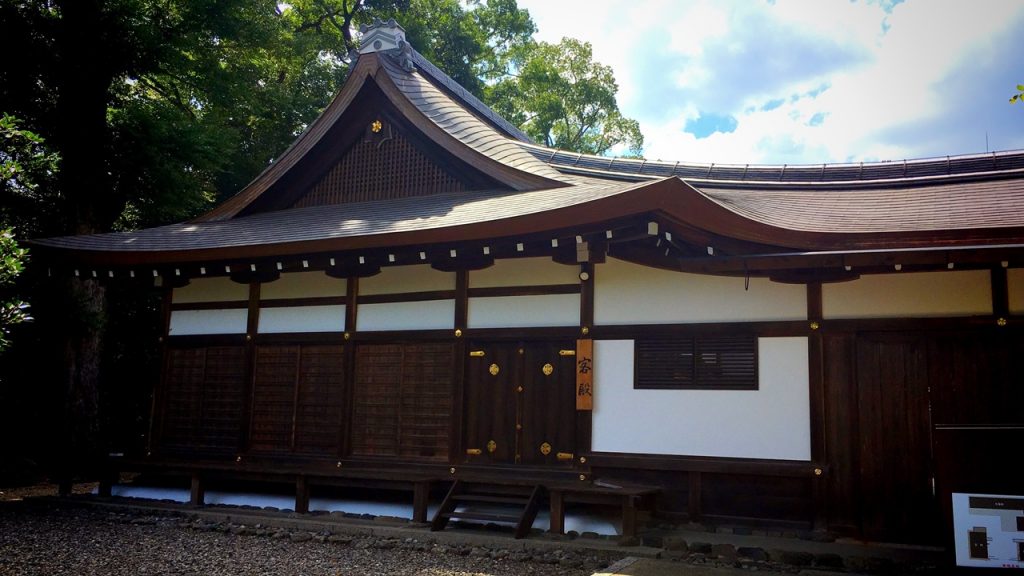
The right building is “参籠殿(Sanroden)”.
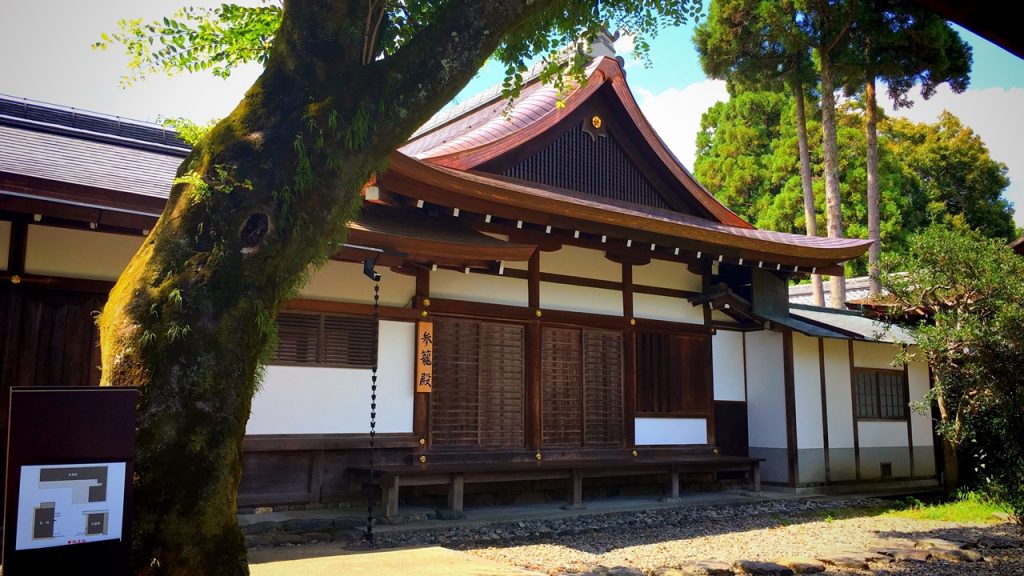
The 御手洗川(Mitaraigawa River) flows through the precincts of this Shinto shrine.

This river is called “ならの小川(A brook of Nara)”, and this scenery is written in one of the hundred poems of a hundred poets.
“風そよぐならの小川の夕ぐれはみそぎぞ夏のしるしなりける”(This poem was written by Fujiwara no Ietaka who is Waka poet in the beginning of the Kamakura Period.)
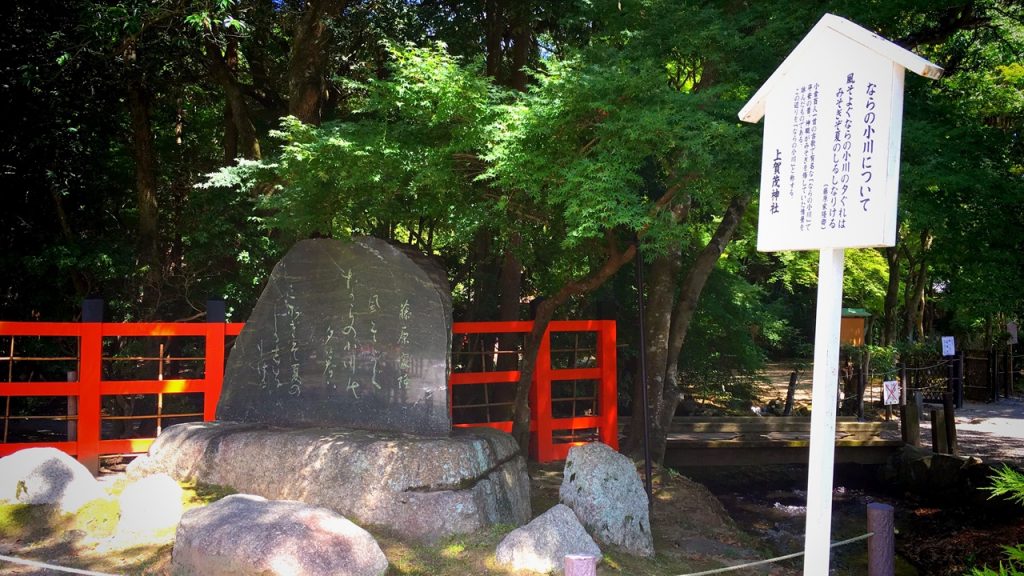
5.A lot of subordinate shrines
There is much subordinate shrine in this Shinto shrine other than a main shrine and a provisional shrine.

God of the different divine favor is enshrined in each subordinate shrines.
“①片山御子神社(Katayamamiko-jinja Shrine)”
This Shinto shrine is god of marriage. The votive tablet of this Shinto shrine is form of the heart. (○´艸`)
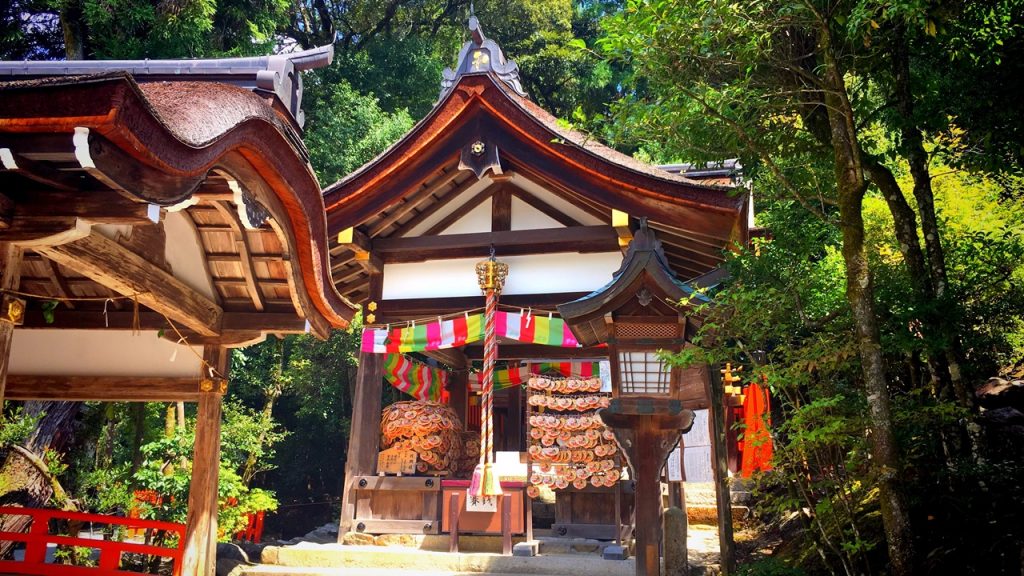
There are two subordinate shrines in this gate.
“②神宮神社(Jingu-jinja shrine)”
This Shinto shrine is God of protecting your body.
“⑬山尾神社(Yamao-jinja Shrine)”
This Shinto shrine is God of the building.
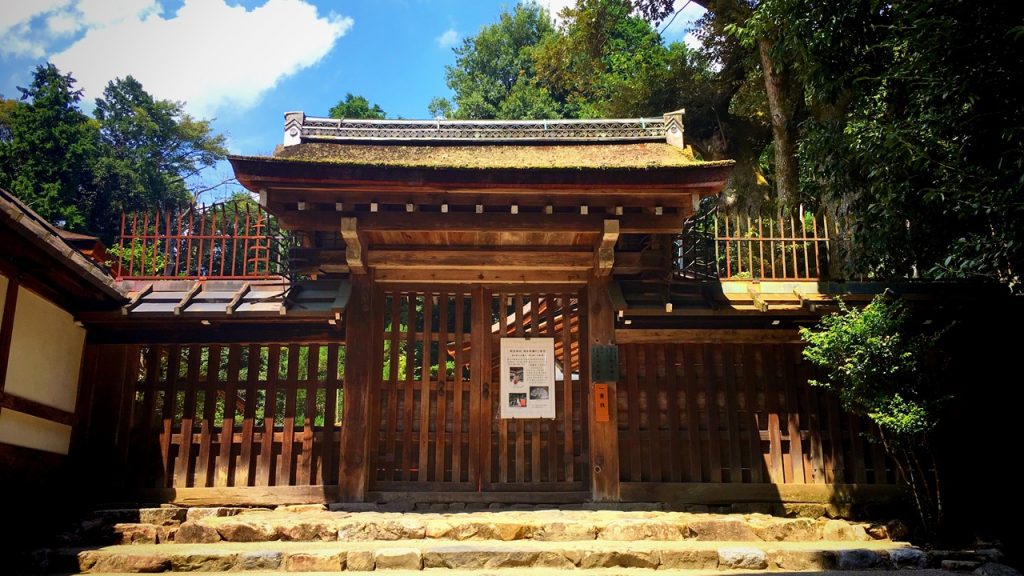
“⑤奈良神社(Nara-jinja Shrine)”
God of this Shinto shrine is God of studies and the dish technology improvement.
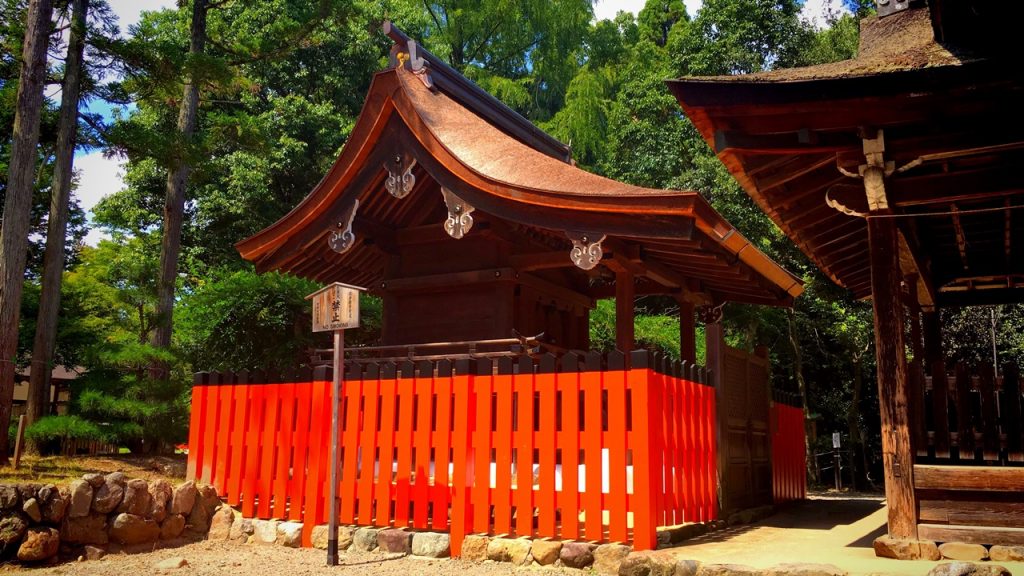
“⑥賀茂山口神社(Kamoyamaguchi-jinja Shrine)”
God of this Shinto shrine is God of business prosperity and watching the growth of the child.
The stone called “願い石(the wish stone)” is put in the precincts of this Shinto shrine.
This stone is said that a wish comes true when we touch it with both hands.
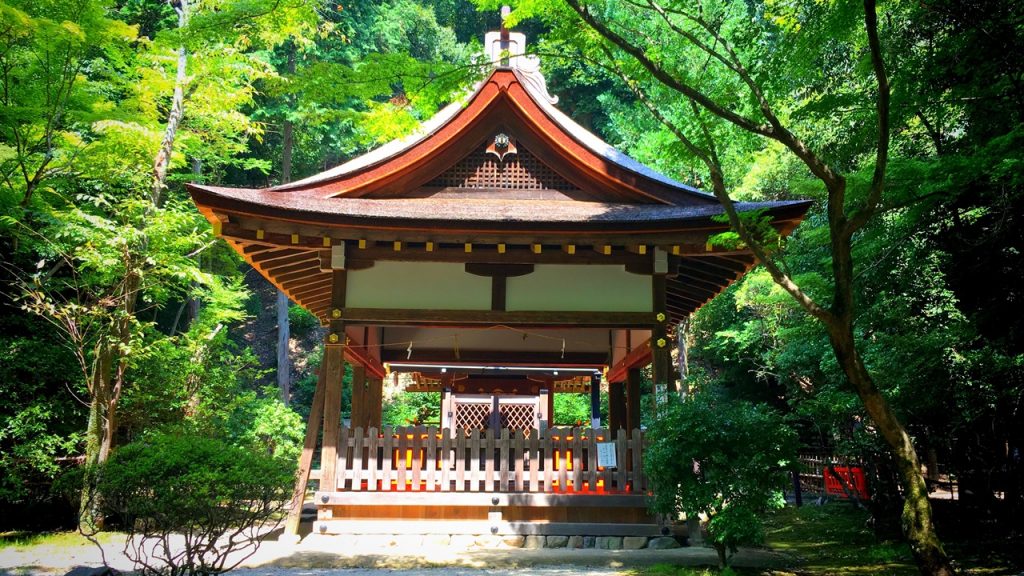
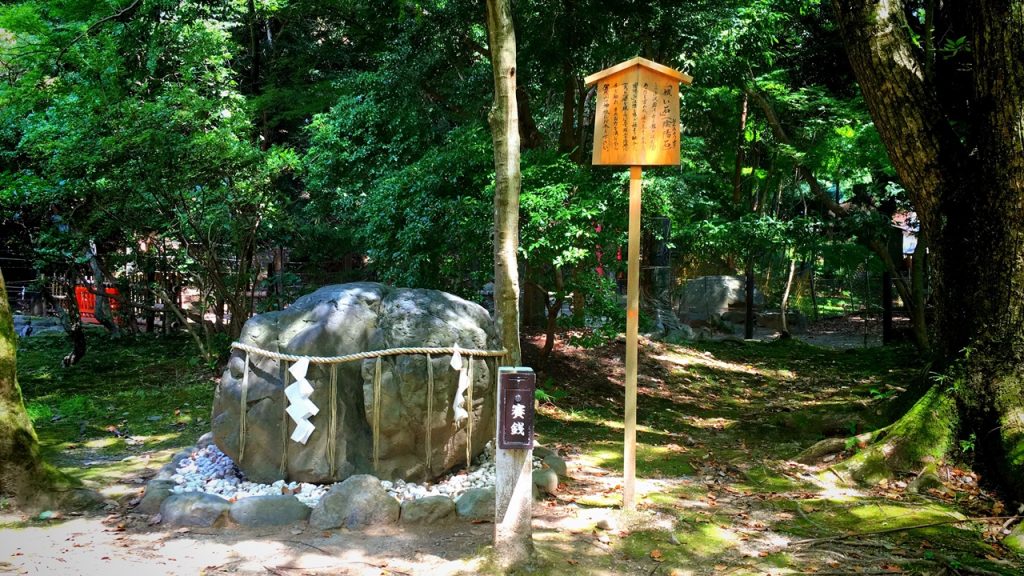
“⑧須波神社(Suwa-jinja Shrine)”
God of this Shinto shrine is God of healing your broken heart. (○´艸`)
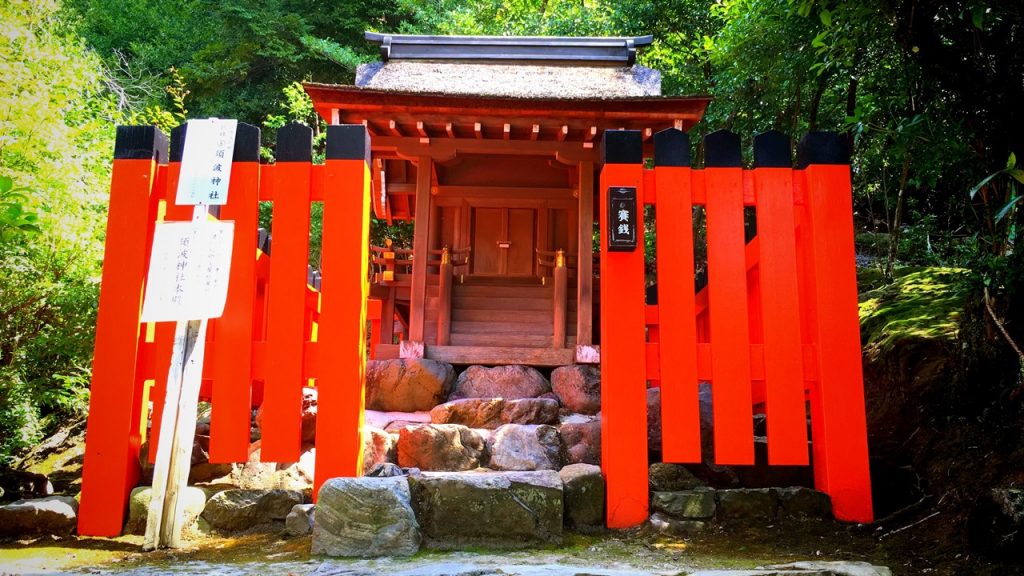
“⑩川尾神社(Kawao-jinja Shrine)”
God of this Shinto shrine is God who can remove the hesitation of your heart.
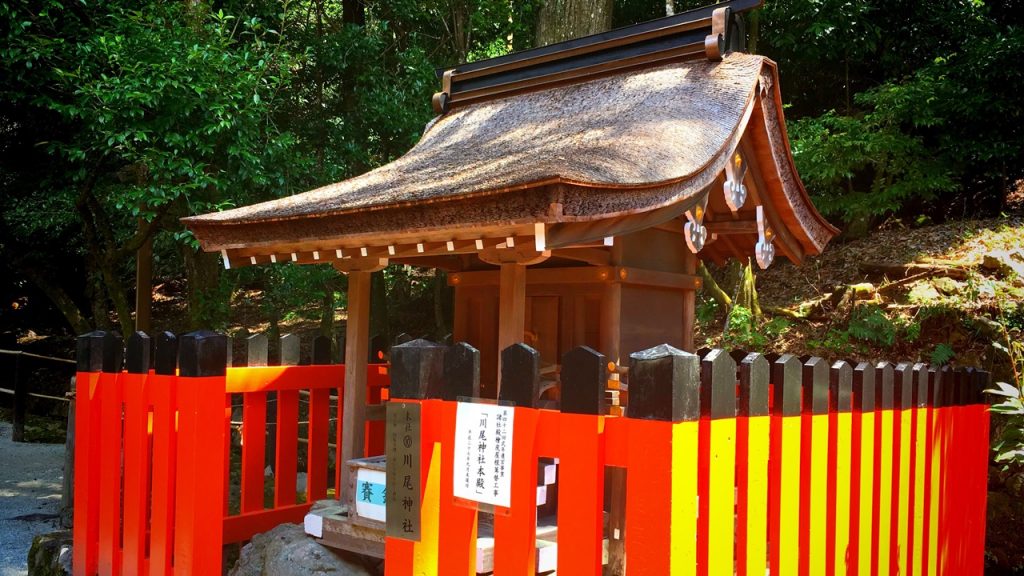
“⑪橋本神社(Hashimoto-jinja Shrine)”
God of this Shinto shrine is God of the longevity and the beauty.
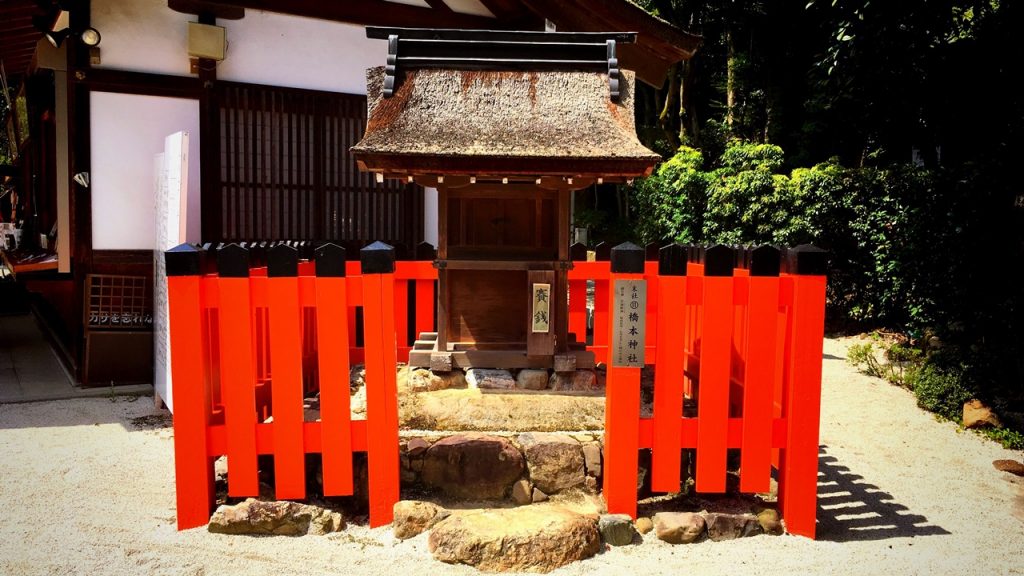
“⑫岩本神社(Iwamoto -jinja Shrine)”
God of this Shinto shrine is God of the road safety.
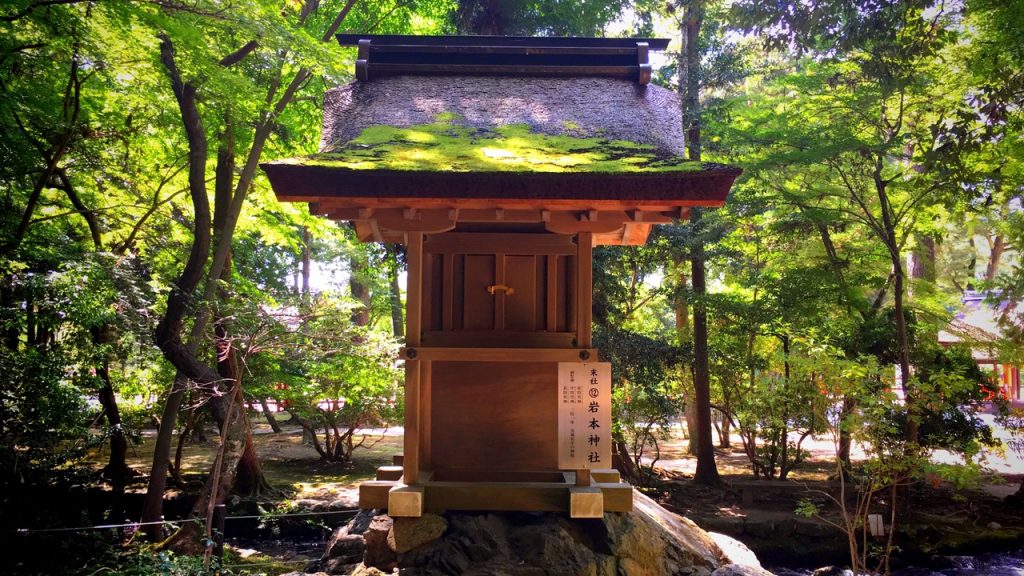
“⑯山森神社(Yamamori-jinja Shrine)”
God of this Shinto shrine is God who can cure your disease.
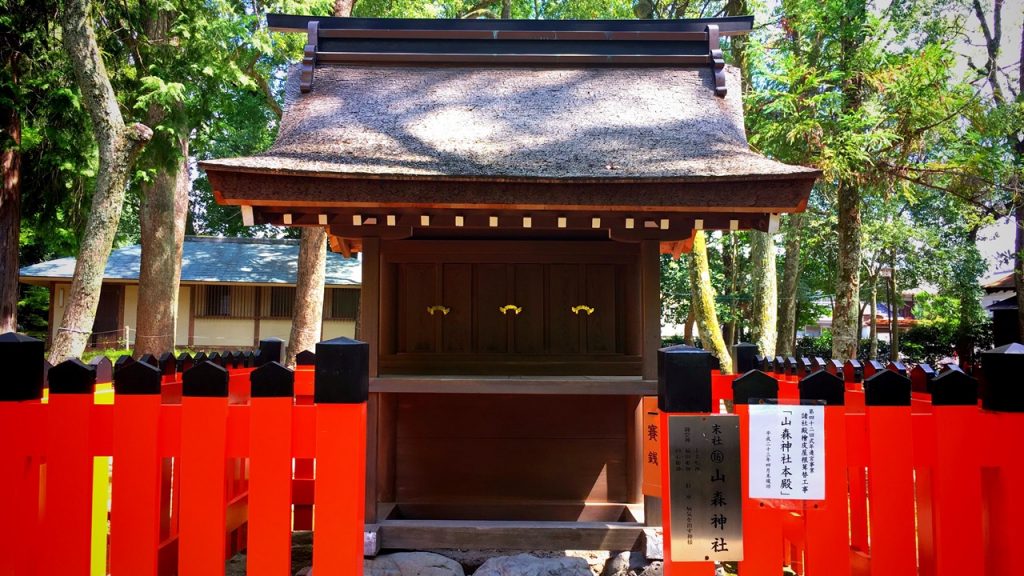
“⑰梶田神社(Kajita-jinja Shrine)”
God of this Shinto shrine is God who can cure your venereal disease.
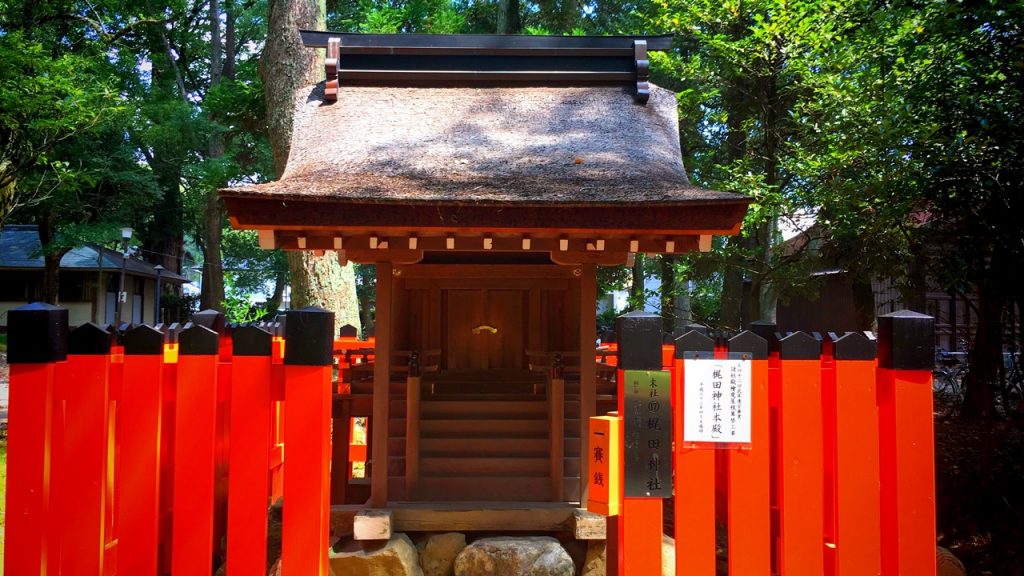
6.Goshuin(shrine seal or stamp) of Kamigamo-jinja Shrine
The word which can be read as “山城国一之宮(Ichinomiya in Yamashiro Province) 賀茂別雷神社(Kamo Wakeikazuchi-jinja shrine)” is written to Goshuin with a sumi.
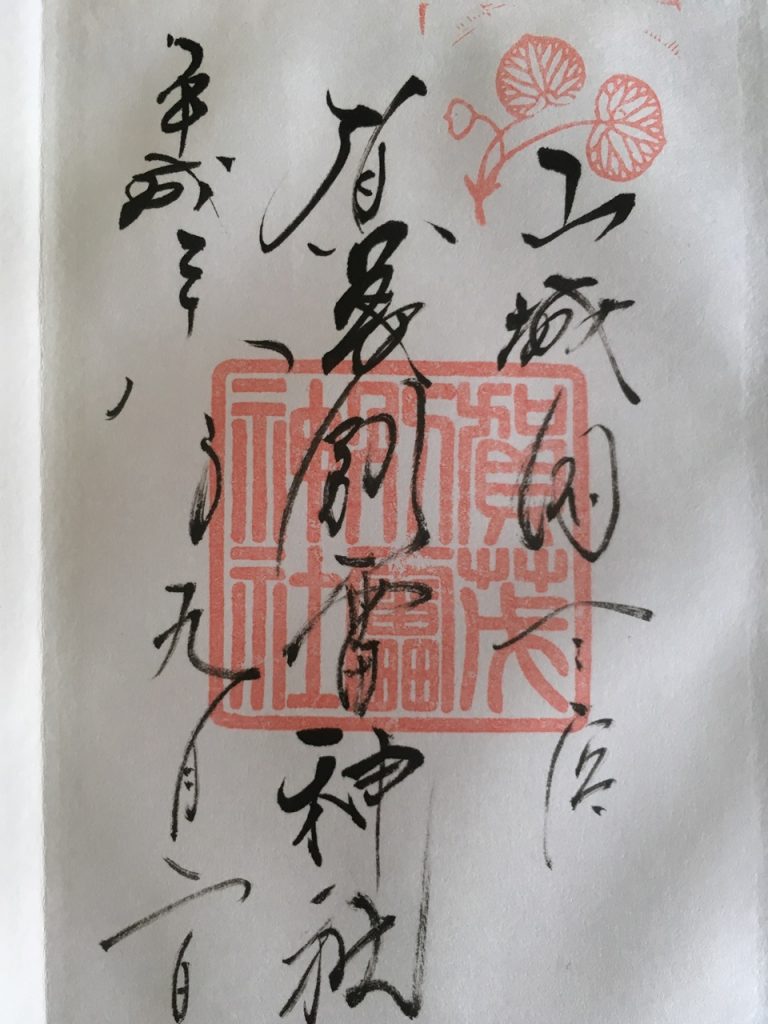
7.How to get to Kamigamo-jinja Shrine
●The map of World Heritage ‘Historic Monuments of Ancient Kyoto’
The nearest station of Kamigamo-jinja Shrine is Kyoto City Subway Kitayama Station.
It is about 30-minutes walk from the station.
I recommend that you take a bus or use a taxi.
■Kyoto City Subway Kitayama Station→Kamigamo-jinja Shrine (In the case of using the bus.)
[Go]
Kitayama Ekimae bus stop, Kyoto City bus No.4, bound for Kamigamo-jinja mae
From “Kitayama Ekimae bus stop” → To “Kamigamo-jinja mae”
[Return]
Kamigamo-jinja mae bus stop, Kyoto City bus No.4, bound for Shijokawaramachi/Kyoto Station
From “Kamigamo-jinja mae” → To “Kitayama Ekimae bus stop”
■Kyoto City Subway Kitayama Station→Kamigamo-jinja Shrine (In the case of walk.)
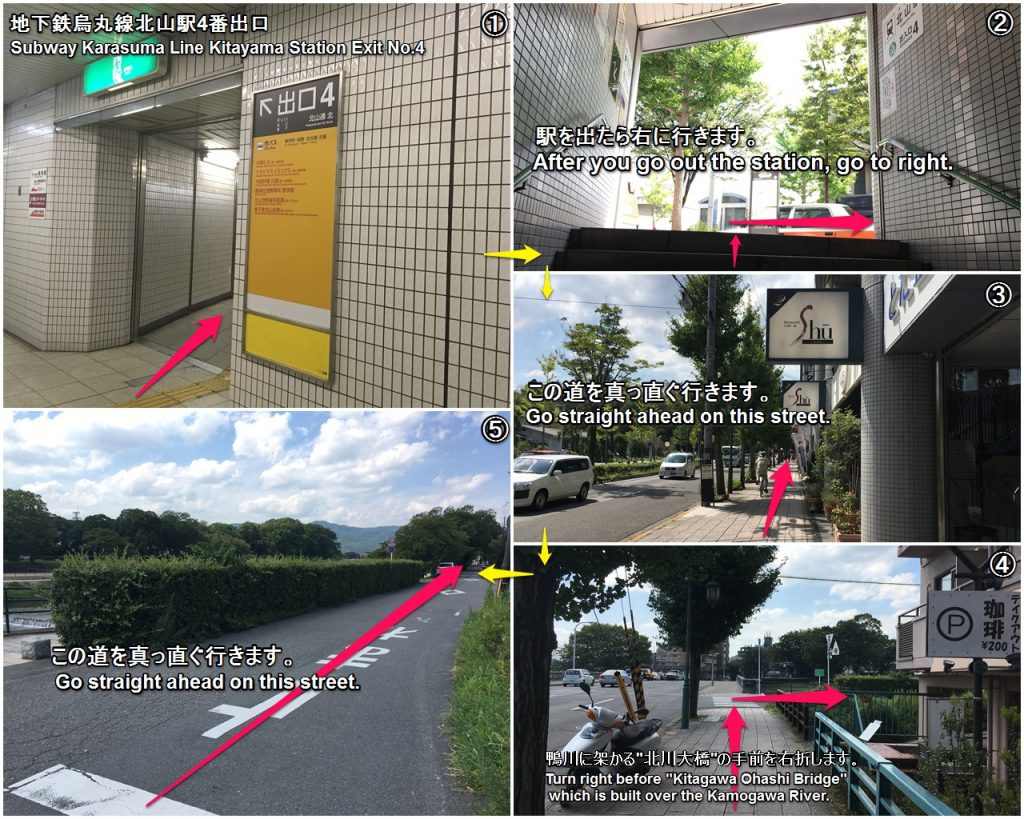
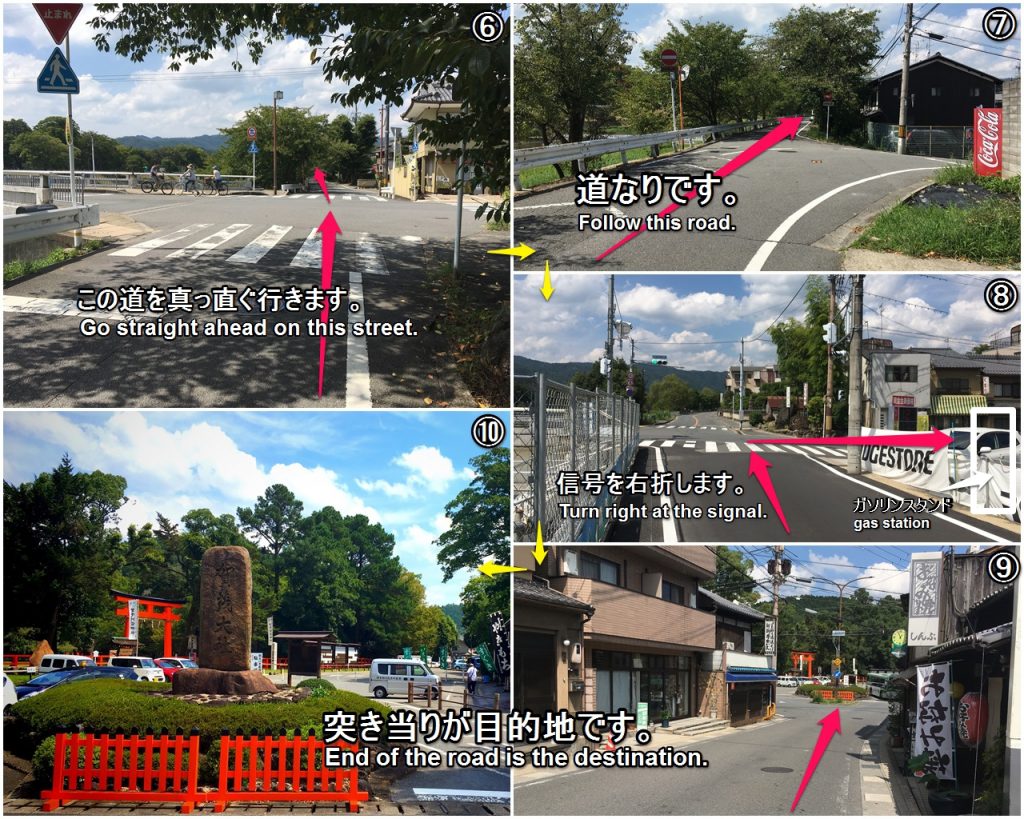
How did you like it?
Please try to go.
Have a nice trip! XD
<Let’s search the sightseeing information of Kansai in Japan on ‘Japan’s Travel Manual‘!!>
<This site introduces the easiest way to get Japanese (Kansai) sightseeing spots to you.>

